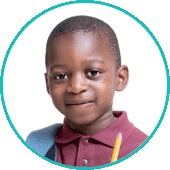CHILDREN
A child’s cancer or other illness can be challenging and confusing for everyone. Depending on their age and developmental stage, you may notice different types of reactions. Fortunately there are ways you can help your child cope now and build resilience for the future.
A child’s cancer or other illness can be challenging and confusing for everyone. Depending on their age and developmental stage, you may notice different types of reactions. Fortunately there are ways you can help your child cope now and build resilience for the future.
These pages will help you support your child through their illness or injury and learn about warning signs of PTSD and medical trauma. You will find activities and resources for at home and in the hospital, tips for talking with your child and other information on helping them through treatment and recovery.
Click the age group below that best describes your child to get started.
Young Children With Cancer & Other Illnesses
Infants and young children rely on their parents and the adults around them to provide a sense of safety and security through trusted routines. Your young child may seem to “bounce back” to a calmer or happier state, even after upsetting or painful moments in treatment. However, they will need you and other trusted adults to provide distraction, security, and comfort.
School Age Children With Illnesses
School age children with cancer and other illnesses are developing a basic understanding of their body and how it works. They also are beginning to learn how medicines and treatments might help when a person gets sick or hurt. Your child has started to develop coping skills for upsetting situations, and probably have some ways to help themselves feel better or calm down when scared. However, they still need you and other adults to support them.
Teens and Young Adults With Severe Illnesses
Teenagers and young adults are more able than younger children to see the bigger picture of their cancer, other illness or injury. However, while they may understand more complex ideas about their illness and treatment, they still need adults fill in gaps and support them.



